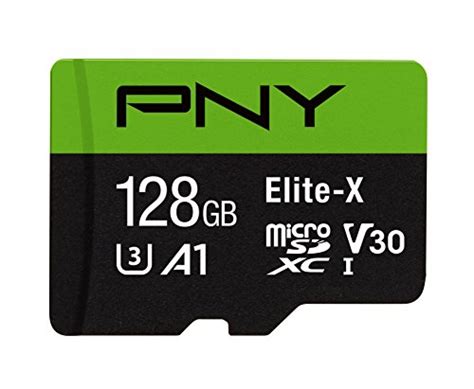Setting up a Google Ads campaign seems to be very simple, and it is, for the most part. However, there are certain typical traps that are simple to slip into if you are unfamiliar with them. In this article, I will discuss some of the most frequent Google Ads errors and how to prevent them for more successful campaigns.

Top Mistakes To Avoid While Setting Up Your Google Ads Campaign
Advertising without a working knowledge of profit margins
The main objective of the majority of companies’ advertising is to generate sales and leads. While traffic and brand recognition are essential, you will need to show a return on your advertising investment sooner rather than later to obtain more funding.
Advertisers must understand their profit margins in order to effectively evaluate and optimize their ads’ success. Smart marketers take the time to calculate the lifetime worth of a new client in order to determine how much money they can afford to spend on customer acquisition.
Avoid combining Search and Display in a Search Network Campaign
When establishing a new Google Ads Search campaign, these are the default parameters. By default, the Display Network is enabled.
If you do not alter the default settings for search network campaigns, your advertisements will appear on Google’s Display Network (Google’s network of third-party partner display websites).
Google recommends that you choose the ‘Search and Display Network’ option since it allegedly offers the ‘greatest chance to reach the most consumers’. While this is technically true, search and display networks function quite differently and are thus best handled separately.
Google Smart Shopping campaigns driven by artificial intelligence, which are now in beta and available to Google Partner agencies, also combine Display, Remarketing, and Search Shopping advertising.
Avoid combining search and display network settings in your search campaigns, as this will impair your ability to track and optimize the performance of these two very distinct networks.
Advertisements on display networks have a significantly lower click-through rate — the number of times your advertisement is clicked divided by the number of times it is shown (impressions).

Google’s new Smart Shopping campaigns use machine learning to display your advertisements to the appropriate people across Display and Search at the exact time they are in the market to purchase or inquire. The system determines who, when, and where to display your advertisements based on over 200 intent signals. This sounds fantastic, but if you want full control or even transparency over the placement of your advertisements, you need to establish separate campaigns for each network.
Pay careful attention to the match kinds for your keywords
Unless you specify otherwise, any keywords added to your Google Ads account will default to the ‘wide match’ match type. A ‘wide match keyword’ may trigger for many more words than you may want to appear for, resulting in clicks and impressions for queries that are not directly related to your advertising goals. If not properly handled, this will soon cost you money.

Creating a Structure that Encourages Irrelevance or Prevents Scalability
The first issue is that if you have a big number of ad groups, there is practically no way for each ad group’s advertisements to be relevant to every single term in the group, and relevance is critical in paid search. The second issue is that it stifles growth. If you continue to add keywords in the future, you will exacerbate the problem of relevancy. Additionally, you lack the option to apply money to a specific category or product.
Preparing your framework meticulously in advance may save you time and aggravation in the long run. To do this, segment your campaigns according to the manner you want to spend.
For many businesses, this structure is identical to that of their website. Examine your navigation and the way you separate goods and services – this may serve as an excellent beginning point for creating campaign themes.

For example, if you are a clothes store, you are likely to want separate campaigns for women’s tops, women’s trousers, and women’s shoes than you would for men’s tops, men’s pants, and men’s shoes. Indeed, you may want to segment further, such as women’s sports tops vs. women’s blouses, and so on.
 Fairwin Braided Leather Dog Training Leash 6 Foot 56 Foot Military Grade H
Fairwin Braided Leather Dog Training Leash 6 Foot 56 Foot Military Grade H
 3m Reflective Dog Leash 5ft Long With Traffic Padded Handle Dog Training Leas
3m Reflective Dog Leash 5ft Long With Traffic Padded Handle Dog Training Leas
 How To Be Your Dogs Best Friend The Classic Training Manual For Dog Owners
How To Be Your Dogs Best Friend The Classic Training Manual For Dog Owners
 Classical Naptime For Tots
Classical Naptime For Tots
 Doggie Stylz Set Of 2 Reflective Therapy Dog In Training Removable Patches Wit
Doggie Stylz Set Of 2 Reflective Therapy Dog In Training Removable Patches Wit
 6 Pcs Service Dog In Trainingworkingstress Amp Anxiety Response Embroidere
6 Pcs Service Dog In Trainingworkingstress Amp Anxiety Response Embroidere
 Service Dog In Training Patch With Hook Back And Reflective Lettering For Servic
Service Dog In Training Patch With Hook Back And Reflective Lettering For Servic
 Four Paws Wee Wee Pee Pads For Dogs And Puppies Training L Gigantic Xl St
Four Paws Wee Wee Pee Pads For Dogs And Puppies Training L Gigantic Xl St
 Pny 128gb Elite X Class 10 U3 V30 Microsdxc Flash Memory Card 100mbs
Pny 128gb Elite X Class 10 U3 V30 Microsdxc Flash Memory Card 100mbs
 Academy Of Beasts V Shifter Romance
Academy Of Beasts V Shifter Romance
 Beast Academy 5a Practice
Beast Academy 5a Practice
 32gb Class 10 Sdhc Flash Memory Card Standard Full Size Sd Card Ush I U
32gb Class 10 Sdhc Flash Memory Card Standard Full Size Sd Card Ush I U














![Flutter & Dart - The Complete Guide [2022 Edition]](https://img-c.udemycdn.com/course/100x100/1708340_7108_5.jpg)










